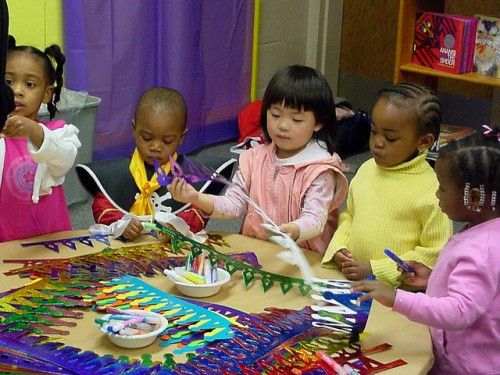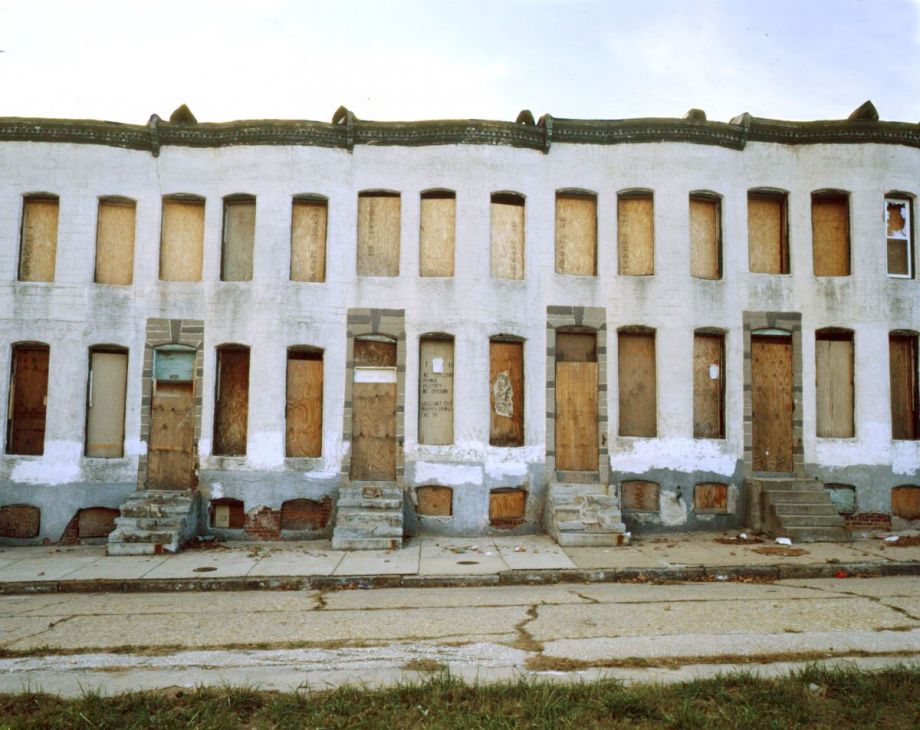The National League of Cities Center for Research and Innovation has joined with Next American City to explore how cities are developing innovative models for tackling complex urban issues and strengthening their local economies. In the coming weeks NLC will feature a series of case studies on foreign direct investment, fiber connectivity and immigration.
Baltimore has steadily lost population since the end of World War II. With 620,000 residents, the city has just two residents for every three it had at its peak in the 1950s. The decline has recently begun to slow, but that isn’t enough for the city’s sitting mayor, Democrat Stephanie Rawlings-Blake. Since day one, the former city council president has been made it her goal to halt the city’s contraction. A city that loses its tax base is unable to secure the funding required to provide services and maintain its infrastructure, she argued in her 2011 inaugural address. “A shrinking city is a place unable to meet even the most basic needs of its people — basic rights that everyone should expect,” she said. “A shrinking city simply cannot stand.”
Rawlings-Blake ended her speech with a vision of adding some 10,000 families to Baltimore’s rolls over the next 10 years. Her strategy: Increase the population in part through attracting more immigrants. These new Baltimoreans will, both with their numbers and high rates of entrepreneurship, strengthen the city’s economy, which in turn will drive more growth.
That vision appeared on the national radar this past March when Rawlings-Blake issued an executive order targeted at “new Americans.” The directive’s intent, according to the mayor’s office, was to state loudly and clearly that those Baltimoreans who use city services will not, generally speaking, be asked about their immigration status. Driving the measure was the idea that, for example, victims of or witnesses to crimes should not have to worry about the state of their immigration papers before going to the police.
To Rawlings-Blake, the measure was a continuation of Baltimore’s long history as a welcoming city. “Baltimore City has long been a home to immigrants from around the world,” her order read, “who come hear seeking peace, stability, and a better life for their families.”
What the mayor left unsaid but what many observers heard: That immigrants who chose Baltimore as the place to seek better lives will also help to re-grow and reinvigorate the neighborhoods in which they put down roots.
To critics, Baltimore is ill-prepared to absorb such an influx of new residents. Other observers caution that in focusing on increased immigrant population numbers, the city might be mistaking a sign of urban revival for its cause. But those close to Rawlings-Blake contend that steps taken to make the city more welcoming to new Americans serve, in the end, to make it more attractive to all Americans.
There’s reason to believe that immigrants can, indeed, boost the city’s challenged economy. “Leaving one’s home and immigrating to a new country to start a new life is itself an entrepreneurial act,” argued an August 2012 report by the nonpartisan Partnership for a New American Economy. Perhaps not surprising, then, is the fact that immigrants to the United States have been drawn to entrepreneurialism. Immigrants or first-generation Americans, the Kaufmann Foundation has found, have been more than 40 percent of Fortune 500 companies in the U.S. According to research conducted by New York’s nonpartisan Fiscal Policy Institute, immigrants own more than 18 percent of the country’s incorporated businesses, though they only comprise 13 percent of the population.
There are two trends at work: Native-born Americans have grown increasingly less likely to start businesses, and immigrants are twice as likely as the native-born to begin ones. Immigrant-owned businesses tend to be small, but in the aggregate they have demonstrated considerable economic power. One in 10 workers employed in the private sector works at a business owned by immigrants. Moreover, immigrant-owned businesses contribute some $775 billion to the U.S. gross domestic product each year.
In Baltimore, it’s difficult to miss the investments that immigrants are making. Nearly a quarter of the city’s small businesses are owned immigrants, a disproportionately high amount considering foreign-born individuals make up only 9 percent of the population and 12 percent of the labor force, according to Fiscal Policy Institute research based on 2010 Census data.
And it’s a change felt on the ground. “You could roll a bowling ball down the sidewalk five years ago,” says Chris Ryer, president of the Southeast Community Development Corporation, which focuses on the Baltimore’s Highlandtown neighborhood. “Now it’s busy.” As the existing population aged out, young families have moved in. “There’s a lot of strollers on the streets,” says Ryer.
While many of Highlandtown’s new residents are Latino, the freshly vibrant area has attracted immigrant entrepreneurs from diverse backgrounds. The neighborhood’s 10-block commercial strip, says Ryer, houses not only a Latino-owned photography studio but an Israeli-owned grocery and a Peruvian chicken joint. Ryer cites statistics on how immigrants open small businesses at higher rates than their native-born neighbors. “We’re seeing the fruits of that in Highlandtown,” he says.
Small Steps to Steady Growth
Rawlings-Blake’s targeted appeal to new Americans is the revival of work done in the city years ago. In 2002, the Baltimore’s Abell Foundation issued a report, authored by former Connecticut congressman Bruce Morrison, that attempted to understand how 21st-century American cities grow. Morrison found that, the Sun Belt aside, cities of the same size as Baltimore shrink when they don’t add newly arrived Americans into their mix. “Immigration is the key to reversing Baltimore’s population decline,” concluded the Abell report.
The ideas detailed in Morrison’s report captured attention in Baltimore. Growing out of that attention was the creation of an Office of International and Immigrant Affairs in the administration of then-mayor Martin O’Malley.
In the years since, though, institutional support for Baltimore’s pro-immigrant push has fluctuated. After O’Malley was elected Maryland governor in 2007 and moved to Annapolis, a large budget deficit put immigration issues to the backburner. The immigration office was cut, its work subsumed by the Office of Neighborhoods and Constituent Services. The effort lost its focus.
Under Rawlings-Blake, the city is reviving the drive to attract new arrivals to Baltimore — within the constraints imposed by its current financial burdens. It’s a more modest approach for a more modest time. Says Ian Brennan, spokesperson for the mayor, “it is a lot of little things we’re trying to do.”
Those efforts include sensitivity training for a police force that has, in the past, faced charges of racial profiling. According to Brennan, the goal of that work is to “make sure the police understand the perspective and needs and specific challenges of New Americans.” Brennan points out that this year, Baltimore named as its new police chief Anthony Batts, a veteran of the police departments of Long Beach and Oakland, Calif. The city has also put in a place a liaison to Hispanic communities who is praised for her energy and enthusiasm.
Moreover, local government has held trainings for newly arrived residents to help them understand the legal requirements they face; Brennan points to a session held by the Mexican consulate aimed at helping immigrants with paperwork compliance. The city also works with groups such as Ryer’s CDC to help connect fledgling entrepreneurs with façade improvement grants and other tools to help boost small businesses. These small steps are aimed at making Baltimore, bit by bit, more welcoming to immigrants, in large part by equipping them with resources to navigate their new home.
Economists agree that the investment in attracting newcomers will pay off. “Immigration and growth go together,” says David Dyssegaard Kallick of the Fiscal Policy Institute. “That much is clear.”
But somewhat less clear, says Kallick, is whether the increase in immigrant populations is a cause of a city’s population growth or an effect of a city being generally more appealing across the board. Kallick cautions that cities like Baltimore risk overinvesting their hopes and resources in attracting immigrants. Kallick cites New York Mayor Michael Bloomberg’s statement earlier this year that the way to re-grow “big hollowed-out cities where industry has left” is to offer city-specific visas. “You would populate Detroit overnight,” the mayor has said, “because half the world wants to come here.”

In hopes of attracting and retaining more immigrants, Baltimore is making small changes in services, including expanding its bilingual programming at public libraries. Credit: Enoch Pratt Free Library
To Kallick, there’s confusion between what it takes to make a city welcoming in ways that counteract policies in places like Arizona, South Carolina and Alabama that have, in recent years, aimed to discourage undocumented immigrants from settling through aggressive tracking of immigration status. But targeting programs specifically at immigrants can have, argues Kallick, an effect that economists call “pushing on a string.” At some point, he says, immigrant-targeted appeals stop making sense, because immigrants are interested in the same things anyone wants: Good jobs, high-quality schools and safe streets.
“You want to create a context that’s welcoming to everyone,” says Kallick, “and a culture that’s welcoming to everyone seems particularly welcoming to immigrants.” A lowered likelihood of being aggressively questioned for immigration status, goes the thinking, might appeal to an immigrant in perfect compliance with the law as much as it might to an undocumented new arrival.
Under this approach, a city that is more welcoming sees its population grow. As it grows, its tax base broadens. As its tax base broadens, it helps to support the local economy, better educational resources and more policing. In turn, those effects make Baltimore more appealing not only to new immigrants, but also to native-born or long-tenured Americans living elsewhere in the U.S. Thus begins a spiraling in a positive direction. Immigration, in short, becomes part of a city’s population revitalization — but only part of it.
Integrating Talent
Baltimore isn’t alone in its embrace of this strategy.
Boston, for example, has an Office of New Bostonians that reaches out to the city’s immigrant population, in part by identifying official and unofficial liaisons to local communities. A project called Global Detroit has raised more than $4 million earmarked for research into the best strategies for attracting immigrants to the troubled Motor City. A plan called Welcome Dayton hopes to make that southwest Ohio city of 140,000 more receptive to new arrivals and help them along toward citizenship; among the initiative’s goals is to develop an international marketplace for immigrant entrepreneurs in an underinvested corner of the city that has demonstrated growth from recent immigrants.
Meanwhile, Pittsburgh is now working to create the social infrastructure to retain incoming talent and recruit more of it. With its thriving tech sector and large universities, it’s not hard to see why Pittsburgh already boasts the most highly skilled immigrant group in the country. Over 53 percent (30,542) of the city’s immigrants hold a bachelor’s degree or higher, according to a recent report from the Brookings Institution. A Welcome Center created by the organization Vibrant Pittsburgh attempts to strengthen the social connections of these new arrivals, pairing them with existing support services from translation to cultural organizations.
Baltimore has particular advantages when it comes to attracting highly skilled immigrants, especially in the fields of science, technology and education. Eight of the top 10 employers in Baltimore are engaged in health, education or both, led by Johns Hopkins University and the University of Maryland (and their medical systems) and the health care organizations MedStar and LifeBridge. That eds-and-meds mix has helped keep the city afloat. The Baltimore region’s 7.1 percent unemployment rate puts it in the middle of the pack when it comes to metropolitan areas of a million or more residents.
With Washington, D.C. just 40 miles down the road, Baltimore provides easy access to the region’s scores of government contractors and public-sector clients. Immigrants attracted to high-tech fields find support from organizations like the Maryland Business Incubation Association, whose collection of 20 business incubators includes the University of Maryland’s Technology Advancement Program, staffed by veterans of start-up firms and the venture capital world, and the Maryland Center for Entrepreneurship in nearby Columbia, which provides affordable workspaces to burgeoning high-tech firms. New businesses in the space find themselves part of a thriving sector, rather than operating in isolation.
And indeed, immigrants are well represented in the innovation realm. A Kaufmann Foundation report found that more than a quarter of technology and engineering companies started in the U.S. in the decade after 1995 had one or more founders who had been born outside the country.
That said, it’s worth noting that immigrant entrepreneurs aren’t evenly distributed across the United States. In Silicon Valley, for example, some 52 percent of tech companies have at least one foreign-born founder. But the figure for Maryland is less than 20 percent. That gap suggests that the Baltimore region has the capacity to add greater numbers of non-native entrepreneurs to its local high-tech sector.
Becoming a Place where “People Come and Stay”
Equally important as attracting immigrants is supporting them once they arrive, not to mention fostering their integration into the city’s economy. In addition to language classes and job counseling, the city has developed initiatives such as its “Vacants to Value” homebuyer program that incentivizes homebuying in historically immigrant-heavy sections of the city, like Greektown and the largely Hispanic Upper Fells Point. The program is open to all newcomers, but the city is doing targeted outreach to immigrant groups. Approved home buyers receive thousands of dollars in deferred loans to be put towards rehabbing vacant properties.
“We’re trying to improve the city’s economy by any way possible,” says Brennan, the mayor’s spokesperson. “We can make it a place that people come and stay,” no matter where they might be coming from.
In its efforts to connect immigrants with needed resources, Baltimore is finding a major ally in the local Catholic Church. Faced with its own shrinking constituency, the church worked to attract foreign-born Catholics into its fold. Some of those efforts have decades-long pedigrees; the Esperanza Center in Fells Point has been offering English-as-a-Second Language class and job counseling for many years. But much of is of more recent origin. The church is holding more masses in Spanish and Igbo, and inviting in visiting priests from Central America, South America and western Africa. Just last year, Sacred Heart School in Highlandtown changed to a bilingual curriculum, adding Escuela Sagrado Corazón de Jesús to its name. Church spaces have been opened to give immigrants a comforting place to meet with police, says Auxiliary Bishop Mitchell Rozanksi of the Baltimore Archdiocese. “We realize that the Catholic Church in America was built by immigrants,” says Rozanski. “We are an immigrant church. We have been an immigrant church.” He goes on. “We’ll always stand with the immigrant.”
It has proven to be a controversial position. The Church has actively defended SB-167, or Maryland’s so-called DREAM Act. The bill, passed in April and approved by voters in a heavily contested November ballot referendum, gives undocumented immigrants who have attended at least three years of high school in Maryland and whose parents have filed tax returns the opportunity to qualify for in-state college tuition rates. The move made Maryland the first state to implement an immigrant-oriented tuition law by popular vote.
There are signs that all of this will pay off for Charm City. Between 2000 and 2010, reveals census data, Baltimore’s population experienced its smallest decrease since the 1950s. The population dropped 4.6 percent, but it comes after a 12 percent plummet in the decade prior. Helping to slow Baltimore’s population decrease was an influx of new residents. While the city’s black and white populations were falling, the city’s Hispanic population doubled over that time, and its Asian population increased by 45 percent. Though the figures include native born residents, there is no denying that immigrants played a role. In 2010, the Census recorded a total of 44,000 foreign-born people living in Baltimore — 7 percent of the population and more than double the number living here 20 years ago. Of those new Baltimoreans, some 40 percent came from Latin American and the Caribbean, another 25 percent from Asia and the Middle East, and 15 percent arrived here from Africa.
The numbers give officials hope for Rawlings-Blake’s vision.
“If we were able to say that we were no longer losing population?” Brennan says. “That’s something a mayor [of Baltimore] hasn’t been able to say since the ’40s.”

The National League of Cities (NLC) is a resource and advocate for almost 2,000 member cities and the 49 state municipal leagues, representing 19,000 cities and towns and more than 218 million Americans. The NLC Center for Research and Innovation provides applied research and analysis, inspiration and innovative ideas and peer-learning opportunities to help city leaders tackle tough issues and improve the quality of life in their communities.

Nancy Scola is a Washington, DC-based journalist whose work tends to focus on the intersections of technology, politics, and public policy. Shortly after returning from Havana she started as a tech reporter at POLITICO.
















